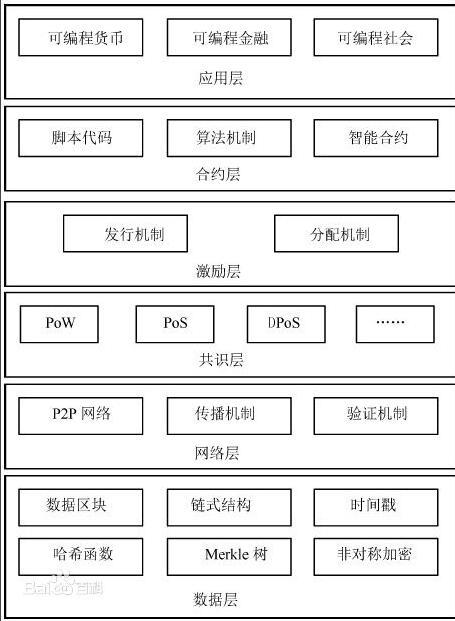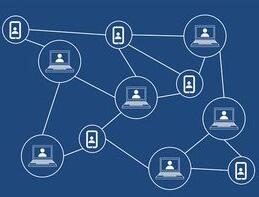The application of blockchain is very extensive and the outlook is very clear. If we say that the first 30 years are the Internet age, then the next blockchain era is no exaggeration. This article mainly introduces the five major characteristics of the blockchain and the three major technical guarantees and application areas. Specific follow-up Compile it together to find out. Blockchain is a new application mode of computer technology such as distributed data storage, point-to-point transmission, consensus mechanism, and encryption algorithms. The so-called consensus mechanism is a mathematical algorithm for establishing trust and acquiring rights between different nodes in a blockchain system. To understand the blockchain, we must first talk about Bitcoin. Bitcoin is not a currency but an electronic ledger. Every investor's computer stores a backup of the general ledger, and all information is updated in real time. Simultaneously, the blockchain is a low-level technology of Bitcoin. It means a decentralized database containing all transaction records. This technology has also been recognized by the financial sector for its safety and convenience. In fact, a blockchain is a series of data blocks generated using a cryptographic method. Each block of data contains a bitcoin network transaction information. This can verify the validity of information and generate the next block. In general, the blockchain system consists of a data layer, a network layer, a consensus layer, an incentive layer, a contract layer, and an application layer. Among them, the data layer encapsulates the underlying data blocks and related data encryption and timestamp basic data and basic algorithms; the network layer includes distributed networking mechanisms, data propagation mechanisms, and data verification mechanisms; the consensus layer mainly encapsulates network nodes. The various consensus algorithms; the incentive layer integrates economic factors into the blockchain technology system, mainly including the issuance mechanism and distribution mechanism of economic incentives; the contract layer mainly encapsulates various types of scripts, algorithms, and smart contracts, and is a blockchain. The basis of programmable features; the application layer encapsulates various application scenarios and cases of blockchain. In this model, the blockchain structure based on timestamp, the consensus mechanism of distributed nodes, economic incentives based on consensus calculation, and flexible and programmable smart contracts are the most representative innovations of blockchain technology. 1. Decentralization - no need for third-party intervention to achieve peer-to-peer transactions and interactions 2, the information can not be tampered with - once the data information is written into the block can not change the revocation 3, open and transparent - in a very short period of time, the block information will be copied to all the blocks in the network, to achieve the entire network data synchronization, each node can back the transaction of all transaction information of both parties. 4. Collective Maintenance - In the entire Internet financial system, both the suppliers of funds and the borrowers of funds can act as protectors; they can jointly maintain the reliability and security of the entire blockchain information. 5. Reliable database – Only by mastering 51% of the entire system, can the blockchain information be tampered with, which is obviously impossible. Because there are so many participants in the entire system, it is impossible to realize the high cost of mastering such a large number of nodes. Can ensure the integrity, authenticity and security of data. 1. Consensus mechanism It is the area where all the accounting nodes have reached a consensus to choose and confirm the authenticity and validity of the records. The entire network recognizes the longest blockchain because the workload on this is the largest. If you want to modify the transaction information in a certain block, you must modify the information of the block and all the following blocks. This consensus mechanism can be used as a means of identification, but also to avoid false transactions and information modification. 2, smart contract Based on trusted, non-tamperable data in blockchain systems? Automatically perform some pre-defined rules and terms, such as automatic recording of new blocks. Convenient and fast only. 3, asymmetric encryption That is, a “key pair†is used during encryption and decryption. The two keys in the “key pair†have asymmetrical characteristics. That is, during the process of sending information, the sender encrypts the information through a key. After the receiver receives the information, it can only decrypt the information by using another paired key. Asymmetric encryption makes it easier for any participant to reach consensus, minimize frictional boundaries in value exchange, and achieve anonymity after transparent data, protecting personal privacy. According to the blockchain's participation access mechanism, that is, the blockchain account public is not open, we can divide the blockchain into three categories: public chain, private chain, and alliance chain. 1, the public chain The data on the public chain can be accessed by everyone, and everyone can also send out their own transactions and wait to write in the blockchain. It is fully decentralized, free from any agency control, and fully open and transparent. Public-chain projects include Bitcoin, Ethereum, Reebok, Superbooks, and most of the competing currencies and smart contract platforms. 2, alliance chain Public chain refers to opening to a specific organization team. It means that the nodes participating in the blockchain are selected in advance, and resources and information can be shared between nodes. For example, you set up an alliance chain between 10 universities to share student's course information. The content of the course on this chain can only be seen by the students of these 10 universities. The content can only be released by the teachers and students of these 10 universities. The alliance chain can be considered as a partial decentralization. Its characteristic is that the transaction speed is very fast and the data can have some privacy. 3, private chain The private chain refers to the blockchain developed for individual individuals or entities. The participating nodes only have their own. The access and use of data has strict rights management. It is a blockchain with a certain centralized control and is generally used as internal audit. use. 1, blockchain assets related fields Many things have been said before, including the distribution of blockchain assets and the payments, cross-border exchanges, transactions, and sales and exchanges behind them. 2, accounting methods related fields The blockchain itself is a distributed billing system. Currently, banking, securities, insurance, etc. are closely related to bookkeeping. Both can use the blockchain billing method to make up or improve existing bookkeeping and Liquidation efficiency. 3, open and trusted related fields It is only meaningful that this type of work is carried out on the public chain. Because it is an "open and credible" application scenario, such as crowdfunding, public welfare, mutual insurance, data security, etc., such as Ant Financial's public welfare projects. 4. Controllable anonymous related fields Transactions on the blockchain are from one address to another. But we don't know who the identity holder is behind this address. Many people use this feature for identity authentication. For example, when we go to a bank or hospital, we may expose our private information. However, as long as the bank or hospital knows that you are the one you can use, you can use the “controllable anonymity†of the blockchain to do your ID card. The information is encrypted and stored on the blockchain, and then it can be certified in a place like a bank or hospital, without requiring a series of procedures such as ID cards. 5. Fields related to notarization The blockchain is also relatively promising in the field of notarization. It is based on the open and transparent nature of the blockchain. There is a paragraph on the Internet. It is difficult to handle things. It takes N chapters to cover a chapter, and even leads to a joke about how to prove your mother is your mother. The blockchain can guarantee the irreversibility and integrity of the file, and its Internet properties can be bounded by geographical and temporal constraints, and provide notary services to the public, which is much more efficient than traditional methods. 6, Internet of Things related fields In the Internet of Things, because the use and status of objects are changing, even every node and product in the network needs to take on the role of both the transaction object and the transaction initiator. This will result in very large basic data and transaction data. . There is also data privacy that is a problem to be solved. The blockchain can solve the core difficulties of the Internet of Things. It can become a key technology for building a new generation of the Internet of Everything. Modern Physics Experiment Series Modern physics experiment related equipment for efficient specialized physics laboratory Modern Physics Experiment Instruments,Optical Instruments,Acousto-Optic Modulator Experimental Device,Optical Spectroscopy Experiment Determinator Yuheng Optics Co., Ltd.(Changchun) , https://www.yhenoptics.com

